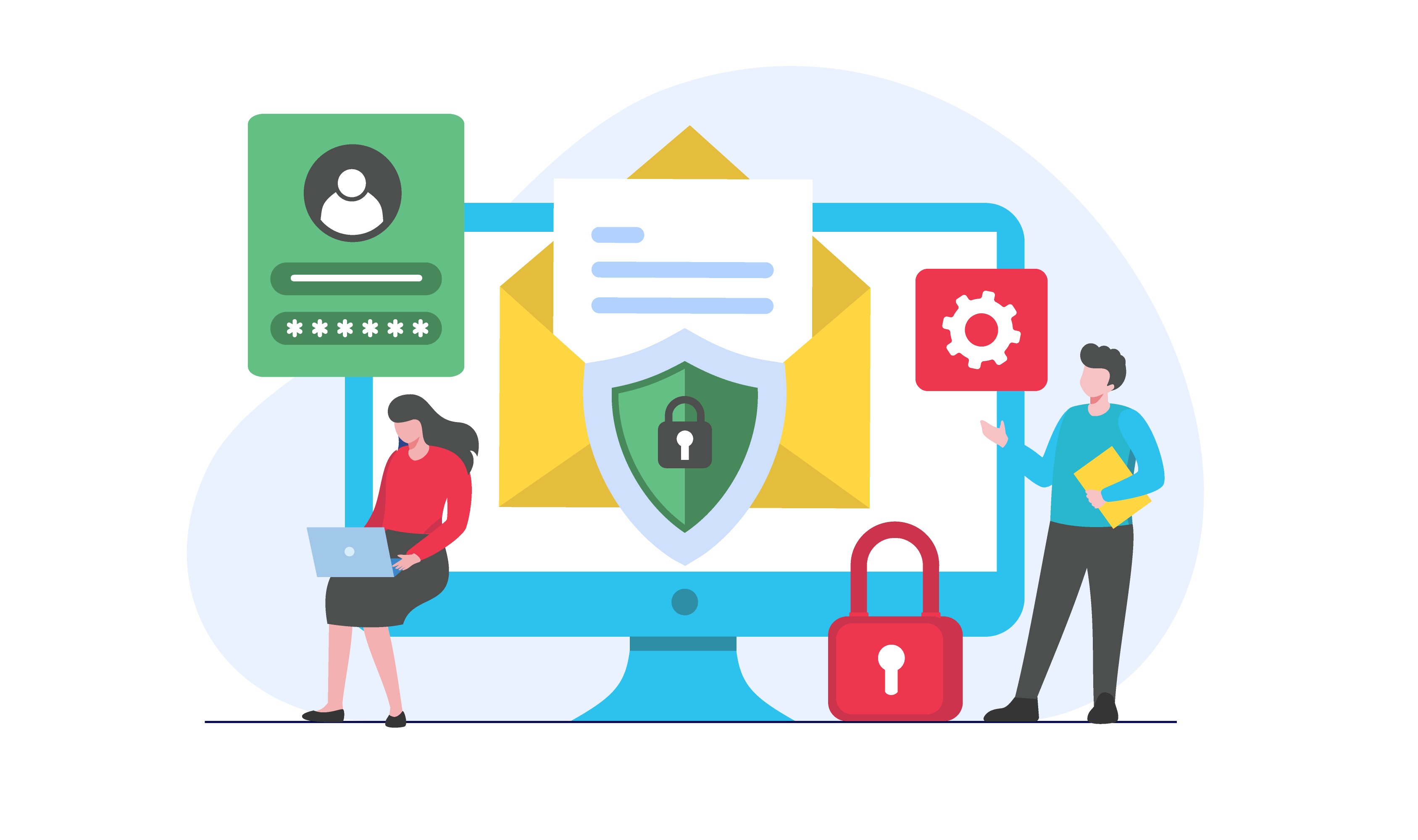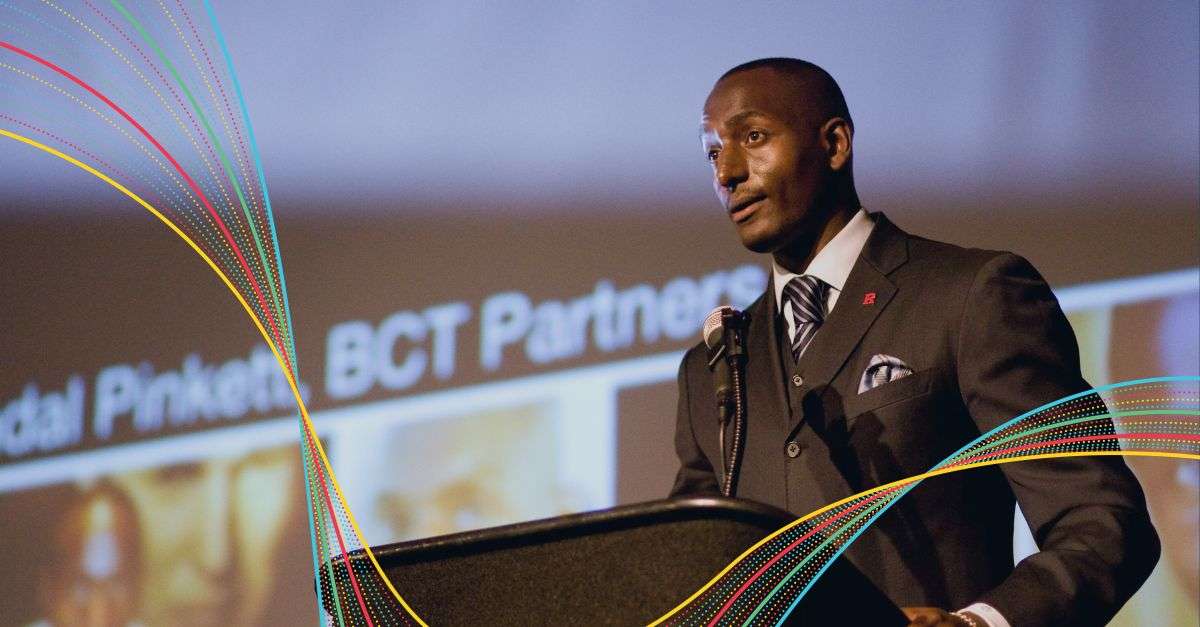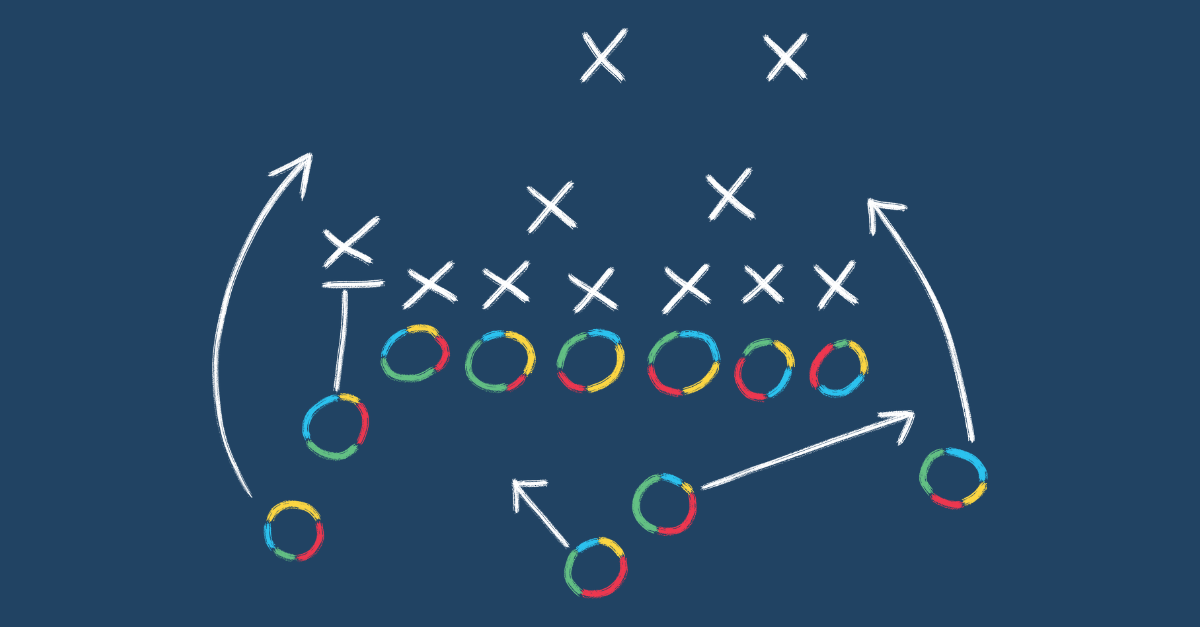Technology empowers your team to connect with co-workers and clients instantly, no matter where they are in the world. But just because you can contact someone at any moment doesn’t mean you should. One of the biggest challenges for leaders of distributed teams is embracing asynchronous work practices so your people don’t have to be available 24/7.
Synchronous work is the traditional way of working — real-time interactions among multiple people, usually in the same place. This mindset still governs many organizational cultures, even in remote and hybrid teams using cutting-edge technology. The challenge for leaders is to break free of these norms and determine the business benefits of asynchronous work. For example, employees in health care settings saved 20 minutes per task by moving from synchronous to asynchronous communication.
Learn more about what asynchronous work and communication look like, the benefits and challenges of asynchronous work, and how Whole Brain® Thinking can help your team embrace asynchronous collaboration.
What Is Asynchronous Work?
Asynchronous work is any type of work or communication that doesn't require all parties to be engaged simultaneously. It is the opposite of synchronous work, which requires everyone to participate in real time. Even if you’re unfamiliar with the terminology, you’ve performed both types of work — in-person meetings are synchronous, and sending or opening a work email is asynchronous communication.
Working asynchronously allows people to collaborate on projects without having to coordinate schedules, which creates flexibility for how and when people contribute. A project composed of many tasks that don’t need to be completed together (or even sequentially) is a common use case for asynchronous working. Each person completes their task and shares their progress with the group.
Remember that asynchronous work isn't synonymous with remote work or digital communication. Virtual communication methods such as videoconferencing are synchronous, just like phone calls or in-person conversations. Moreover, some digital workplace tools can be asynchronous or synchronous depending on how they’re used. You might send an instant message to a colleague knowing that they’ll look at it later, or you might message back and forth in the moment. Similarly, video can be synchronous (a call) or asynchronous (a recording).
6 Asynchronous Communication Examples
One simple way to think about asynchronous work is through methods of communication. Asynchronous communication doesn’t require all parties to be available at the same time or to respond right away. Synchronous communication, by contrast, includes real-time interactions such as meetings, face-to-face conversations, and phone calls.
Here are six examples of asynchronous communication:
- Email: Any sort of missive, physical or digital, counts as asynchronous communication.
- Collaborative document editing: Multiple people can contribute to a document and leave comments to be answered later.
- Reference guides and wikis: These can be updated at any time without requiring every contributor to be present.
- Project management tools: Users can leave notes or comments at their leisure to document their progress on tasks, highlight obstacles, or ask questions.
- Instant messaging apps: Slack, Microsoft Teams, and other platforms enable asynchronous or real-time messaging.
- Recorded videos or audio: This type of content often is used for training or other content that’s accessed on the user’s own time rather than in the moment.
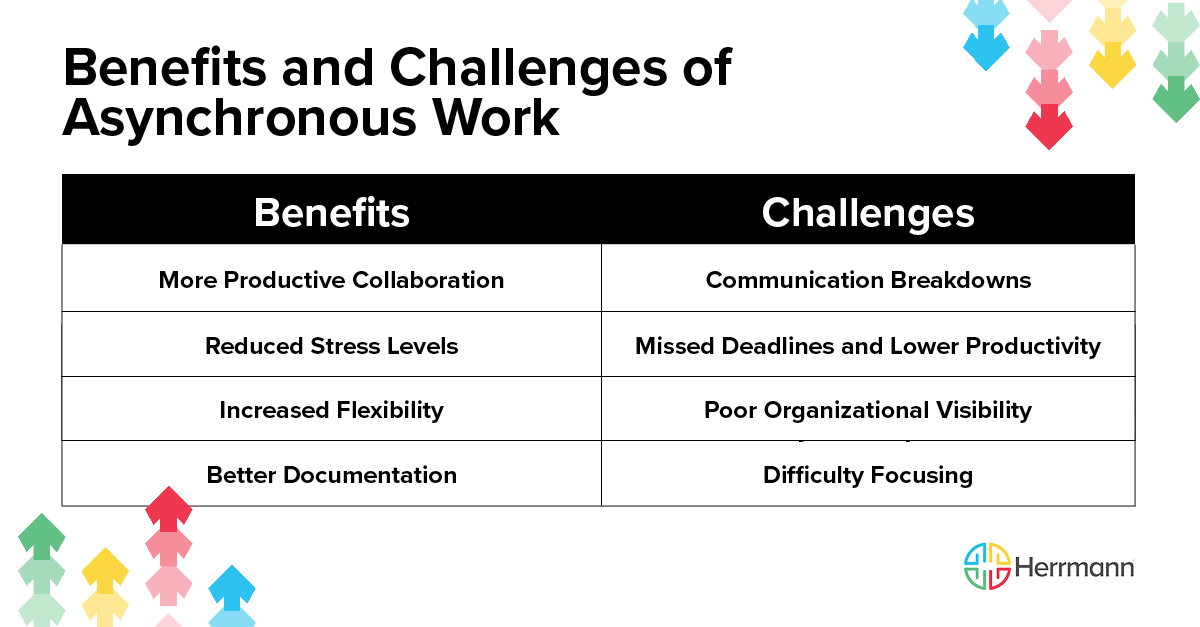
Benefits of Working Asynchronously
Working asynchronously helps global teams be more efficient, effective, and collaborative. Here are some of the benefits your team can realize from asynchronous working habits.
More Productive Collaboration
Collaboration can happen in real time, but it’s not the only approach. Asynchronous work enables individuals to work together on projects and common goals on the schedule that works best for them while occasionally synchronizing for meetings. Teams can communicate 24/7 without requiring an immediate answer.
As a result, teams get the benefits of collaboration, such as creativity and innovation, without limiting productivity to only those hours where everyone’s availability overlaps.
Reduced Stress Levels
Sign up to our newsletter for the latest insights
Asynchronous work also helps employees take breaks when needed, particularly for cognitively intensive or creative work, reducing the likelihood that they’ll become overwhelmed.
Increased Flexibility
Another benefit of asynchronous work is increased flexibility with tasks and deadlines. Because people can work fluidly, they can enjoy flexibility with task-specific deadlines even as the team strives for a definitive final deadline.
Teams spend less time scheduling around meetings because they can embrace asynchronous communication such as email, instant messaging, and project-management tools to have meaningful discussions. Asynchronous work also enables teams to tap a wider talent pool — you can bring in a specialist who lives in a different time zone more easily, for example, than if everyone on the project must work the same hours.
Better Documentation
Because asynchronous communication is usually digital, it’s easier to document discussions, decision points, templates, and other meaningful information about your team’s work.
Documentation also means less guessing in the moment. While real-time conversations can be effective for gaining clarity or brainstorming, they’re less helpful for trying to remember key facts that are in asynchronous channels, such as wikis or knowledge bases.
Challenges of Working Asynchronously
While working asynchronously has many benefits, it also can be challenging for organizations, especially those that are shifting longstanding processes or fail to prepare for potential downsides. Here are a few such challenges.
Communication Breakdowns
Asynchronous work is a powerful way to get things done and share information widely, but sometimes people need real-time interactions to gain clarity, brainstorm, or build relationships with colleagues. An overreliance on asynchronous work can leave employees feeling confused about assignments or detached from their teammates.
Teams need clear guidelines about the types of communication that can be asynchronous (a status update or background documentation, for example) and those that should be synchronous (an on-deadline question or an emergency, for example).
Furthermore, async communication isn’t a substitute for relationship-building, whether between managers and employees or between colleagues. Even an all-remote, project-based team benefits from synchronous activities, such as regular manager-employee check-ins, project launches, after-project debriefs, and training sessions.
Missed Deadlines and Lower Productivity
Asynchronous work can make teams more productive because people can work on their tasks independently, but such an approach requires strong project management. Poorly organized async results in employees who are stuck waiting for colleagues to finish their work — if they even know what they’re supposed to be working on.
Sometimes, task-related questions are urgent, and teams working across various schedules might be delayed in getting the answers they need. This can result in frustrations and missed deadlines.
Poor Organizational Visibility
Teams working asynchronously can lack visibility into each other’s progress, making it difficult to track progress and hold team members accountable. It’s easy for async-first teams to get stuck in slips — only focusing on their tasks and schedules while failing to share their insights and knowledge more widely.
Similarly, team leaders might struggle to assess the state of a project or assignment if updates are scattered across many documents and systems. Establishing a system for updates, such as periodic synchronous meetings or a channel dedicated to project check-ins, can preserve the flexibility of asynchronous work while giving leaders a view into what’s happening.
Difficulty Focusing
Asynchronous work can require higher levels of self-discipline and time management by employees, especially when they work remotely or on a different schedule than their colleagues. This can be challenging for some workers if they’re used to synchronous work, structured schedules, or micromanagement.
Another way distractions can manifest in asynchronous work is through the constant stream of notifications from email, chat platforms, project-management tools, and other programs. This is where organizational policies can help govern what notifications should be enabled and whether employees can block off time for uninterrupted deep thinking.
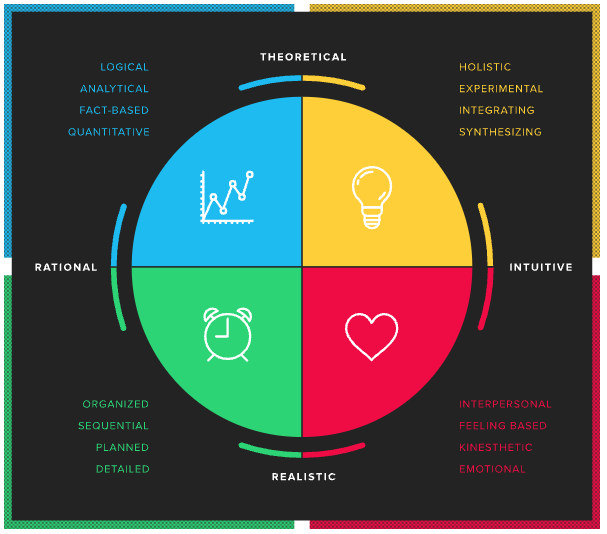
How to Create a Culture of Asynchronous Work
Every person has a distinct set of thinking preferences that shape their personality, behavior, and worldview. Understanding your thinking — and other people’s thinking — is critical
to improve effectiveness and engagement in individuals, teams, and organizations.
The Herrmann Brain Dominance Instrument® (HBDI®) assessment helps you understand how you prefer to process information. Your HBDI® profile enables you to visualize your thinking preferences through the Whole Brain® Thinking framework, a powerful, science-backed operating system for decoding and harnessing the cognitive diversity of individuals, teams, and organizations.
Whole Brain® Thinking consists of four quadrants: Analytical (Blue), Structural (Green), Relational (Red), and Experimental (Yellow). Each quadrant is distinct but equally important. While you might prefer to work in one or two quadrants, you can succeed in all four.
So, how do you embrace asynchronous work in your team, especially when you know not everyone is always available (or in person) at the same time? Let’s explore four ways you can create a culture of effective asynchronous work with the help of Whole Brain® Thinking.
Where Does Asynchronous Work Show Up?
Asynchronous work structures rely on everyone’s agreement on how they’ll communicate, where they’ll put key information, and the “workspaces” in which certain types of work will get done. If you're a manager setting up an asynchronous team, define your team's workspaces clearly and provide clear instructions on how to use them.
For example, your team might decide that all key documents should be stored in a shared drive, while you’ll use Microsoft Teams for project-based communication, email for client communication, and JIRA for technical requests. You wouldn’t share files via email, for example, or use phone calls for discussions that should go in Microsoft Teams.
The key is that the entire team commits to being in the same workspaces to maximize productivity and prevent information from slipping into silos. In Whole Brain® Thinking, this taps into Blue (Analytical) preferences for logical, quantifiable processes. It also taps into the Green (Structural) preference for organized thinking.
What Are the Rituals for Asynchronous Work?
Rituals are simply regular activities the team commits to participating in, whether synchronous or asynchronous. These include remote team meetings, daily updates posted to task-management platforms, and even committing to your daily to-do list.
In synchronous work, especially in traditional office settings, most rituals are either face-to-face meetings or "implicit" rituals (stopping by an employee's desk to ask what's going on while on your way back from the coffee machine).
However, in asynchronous remote work, we have to find other ways to create the same regular cadence for our teams. A good starting point is giving your team a standard set of questions for a daily update. Here at Herrmann, we use the following:
- What did you do today?
- Where can we go to see your work?
- What do you plan to do tomorrow?
- Where are you blocked?
In Whole Brain® Thinking, establishing rituals taps into the organization, planning, and detail of Green (Structural) preferences and the interpersonal needs of Red (Relational) thinking. Yellow (Experimental) thinkers also might find rituals helpful for synthesizing information and working through problems or obstacles.
How Can We Communicate Effectively?
One of the most significant shifts for many people with asynchronous work is the shift from verbal to written communication. Not everyone feels as comfortable with written communication, and tone can be more challenging to interpret in text-based communication.
Team leaders can lean into Red (Relational) and Green (Structural) thinking when helping their teams adapt to the writing-heavy communication of asynchronous work. For example, set clear policies about what types of communication should be in writing. Compile best practices on how your organization prefers to communicate — for example, how to share that you’re blocked on an assignment or what channel to use to give feedback on someone else’s work.
Help your team understand that, by defaulting to writing, you get more time to craft a thoughtful, careful message. You can think carefully about your audience, consider their HBDI® profile, and communicate in a way that speaks directly to their preferences.
Remember that asynchronous communication is a powerful tool, but it’s not your only option. Some conversations, such as manager-employee check-ins, should be conducted synchronously. And consider moving discussions to synchronous forms of communication if you feel stuck, confused, or misunderstood.
How Do We Synthesize Our Work and Decide?
One of the biggest challenges of asynchronous communication is the sense of conversations that happen in little trickles but never resolve in a final decision. This kind of synthesis tends to happen naturally in synchronous communication because eventually you all have to stop talking and move on. Asynchronous work structures, however, often require team leaders to provoke a decision point.
One mechanism is to switch back to synchronous communication for key decision points and resolution. Asynchronous communication can suffice for setting context, preparing the agenda, and allowing everyone to weigh in ahead of time.
Figuring out how to move your team to decision points meets the needs of all four quadrants of Whole Brain® Thinking, as you help everyone synthesize the available information (Yellow), make fact-based decisions (Blue), move forward in the sequence of events (Green), and consider everyone’s feelings and input (Red).
Empower Your Team Through Asynchronous Work
Asynchronous work isn’t new, but it’s an increasingly important part of collaborative teams that drive better thinking, innovation, and outcomes. Start by understanding how your team currently works, where it can more effectively work asynchronously, and the challenges involved in making this shift. Then, establish clear processes for asynchronous collaboration and communication, relying on Whole Brain® Thinking to create a culture that embraces asynchronous and synchronous work, each in their ideal environment.
Download our guide to going remote as a team.






